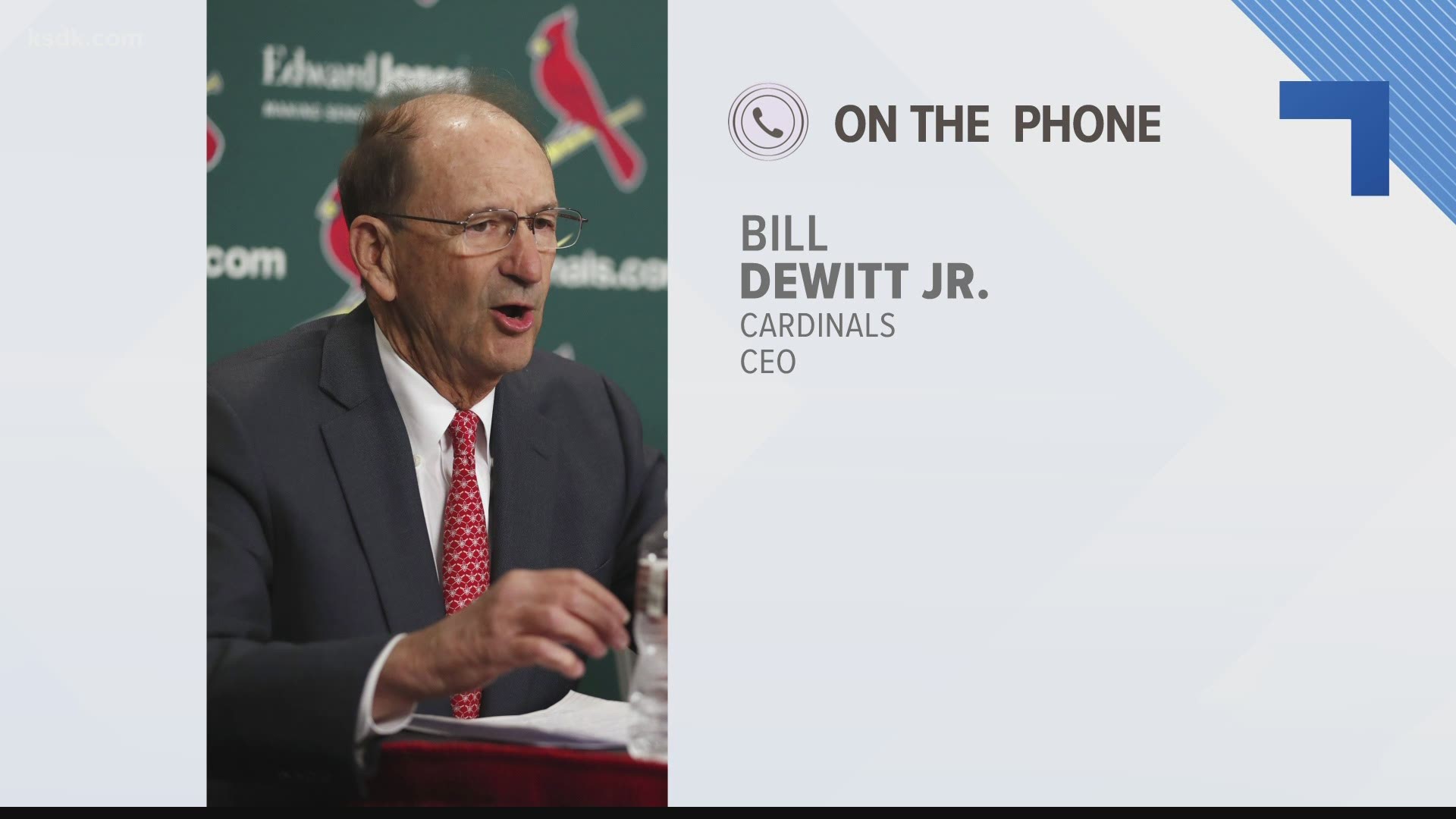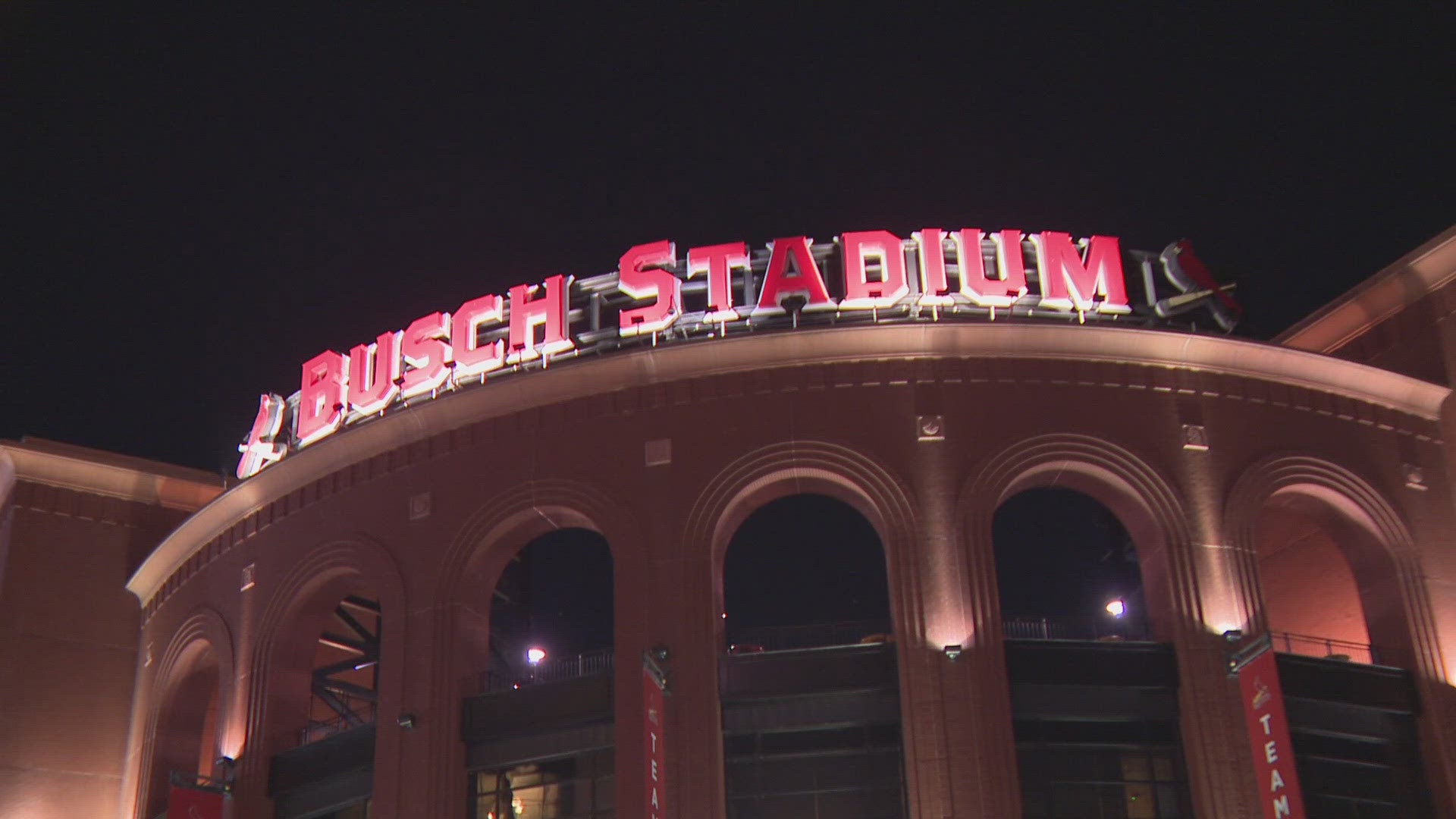ST. LOUIS — Despite everything that will be different about this year’s baseball draft, there is one thing Randy Flores knows that hasn’t changed – the importance of the Cardinals’ selections.
If anything, an argument can be made that each of the picks in this year’s draft are even more important than the selections from the past several years.
“This organization is built on its player-development pipeline,” said Flores said, the team’s assistant general manager and scouting director, during a zoom call on Tuesday with media members.
Because of the pandemic which has shut down baseball this season, the draft has been shortened from the customary 40 rounds to only five, a total of 160 picks. Seven of those picks will be made by the Cardinals, tied with the Giants for the most of any team.
Going from 40 picks to only seven, and trying to maximize each of those selections, is the challenge facing Flores and his team of Cardinals’ scouts – who in large part have had to do their evaluations of players this spring through analyzing video instead of watching prospects in person.
“With seven picks we still have an opportunity to really add talent to our system,” said John Mozeliak, president of baseball operations, on the zoom call. “I still think there is going to be a lot of excitement, on our zoom calls if you will, knowing there is going to be some talented players we can acquire.
“We’re entering this draft with the same atmosphere and excitement we normally have. The one thing that is different is that you just have a lot less shots on goal. What I mean by that is you don’t have that opportunity to go 40 rounds. Players come from every round, and we are going to lose that opportunity.”
The Cardinals’ two extra picks fall between the second and third rounds – a competitive balance selection awarded because of market size, and an extra pick for losing free agent Marcell Ozuna to the Braves.
The Cardinals originally had another high pick in the draft, the 37th overall choice, but included that pick in the trade that sent Jose Martinez and Randy Arozarena to Tampa Bay for lefthanded pitcher Matthew Liberatore.
The first 37 picks in the draft will come off the board on Wednesday night, beginning at 6 p.m. St. Louis time. The Cardinals have one selection on day one, the 21st overall pick.
The remaining picks will be made on Thursday, with the Cardinals holding the 54th pick (their second round choice), the 63rd and 70th picks (their two extra picks), the 93rd pick (third round), 122nd pick (fourth round) and 152nd pick (fifth round).
Getting to choose five of the top 93 players gives Flores and the scouts some flexibility in their selections.
“What I would also look at is the gap between our first and second pick,” Flores said. “That flexibility doesn’t start until pick 53. I can’t decide what the teams do ahead of us. We have to wait and see how it plays out.”
For the past four years that he has been in charge of the Cardinals’ drafts, Flores has been surrounded by scouts and other team executives in a conference room at Busch Stadium for the three-day event. This year, he will be working in a “ghost-town” at Busch Stadium, with only he and Mozeliak in the office. All of the scouts who normally would be in the same room will be scattered across the country, watching the draft from their homes on television.
“If you have a room full of scouts, full of your analysts and your front office and you make a pick, there is a real tangible feeling in that room,” Flores said. “It will be absent that feeling, that energy that is provided by people.
“The stakes are just as high. The atmosphere might be different. It will be missing 50-plus people in the seats observing those decisions.”
A case could be made for the Cardinals to use their top pick on a high school position player, if one of the top prospects falls down the board as happened two years ago with third baseman Nolan Gorman. There is risk with any prep selection, however, magnified more this year because many of those players had no or only a very short spring season.
That makes the scouting evaluation harder, with teams having to rely more on what a player did on the summer showcase circuit last year.
One advantage of taking a high school player, however, is that he would have age on his side. If he doesn’t have a place to play this year, he would come into the 2021 season as an 18 or 19-year-old player compared to players coming from the college ranks who would be 21 or 22.
The right player has to fall to them, however, or the Cardinals likely would pivot and take either a top high school pitcher, if he falls, or a college player.
The strength of this year’s draft class is generally considered to be college pitching, which is another reason the Cardinals might go with a high school player in the first round, knowing the depth of the pitching prospects would allow them to still make quality selections with their other picks.
A variety of mock drafts have linked the Cardinals to numerous players, but one team doing something unexpected in front of them could change their selection.
The top-ranked high school player, outfielder Zac Veen, will almost certainly be one of the top six picks in the draft, but whether the teams above the Cardinals chose to take high school or college players will influence Flores’s decision for the top pick.
Other high school position players who could still be in play for the 21st pick are outfielders Austin Hendrick, Robert Hassell and Pete Crow-Armstrong, who is from the same Los Angeles high school that produced Jack Flaherty. Tyler Soderstrom has been a catcher in high school but also projects as a possible third baseman or outfielder, and Ed Howard, from Chicago, is ranked as the top high school shortstop.
Another difference this year, and perhaps will be the case with all drafts in the future, is the possibility of finding a Trevor Rosenthal, Matt Adams or other late-round selections who developed into major-leaguers. The Cardinals, and all other teams, will be able to sign undrafted free agents but cannot give them more than a $20,000 signing bonus.
It remains to be seen how many of those players the Cardinals will sign, but it’s likely it will be a low number – both because there will almost certainly not be a minor-league season this year, and also because it is likely there will be fewer minor-league teams next season. The Cardinals could well lose two of their affiliates, the Johnson City Cardinals and State College Spikes, because of the anticipated minor-league contraction.
“Clearly you still have to position the organization as a place of opportunity, and so when you are looking at potentially losing two minor league teams, we want to make sure the players that we do have get the same opportunity they may have gotten in years past,” Mozeliak said. “We want to make sure everybody has a path forward if possible.”
Follow Rob Rains on Twitter @RobRains for complete draft coverage




